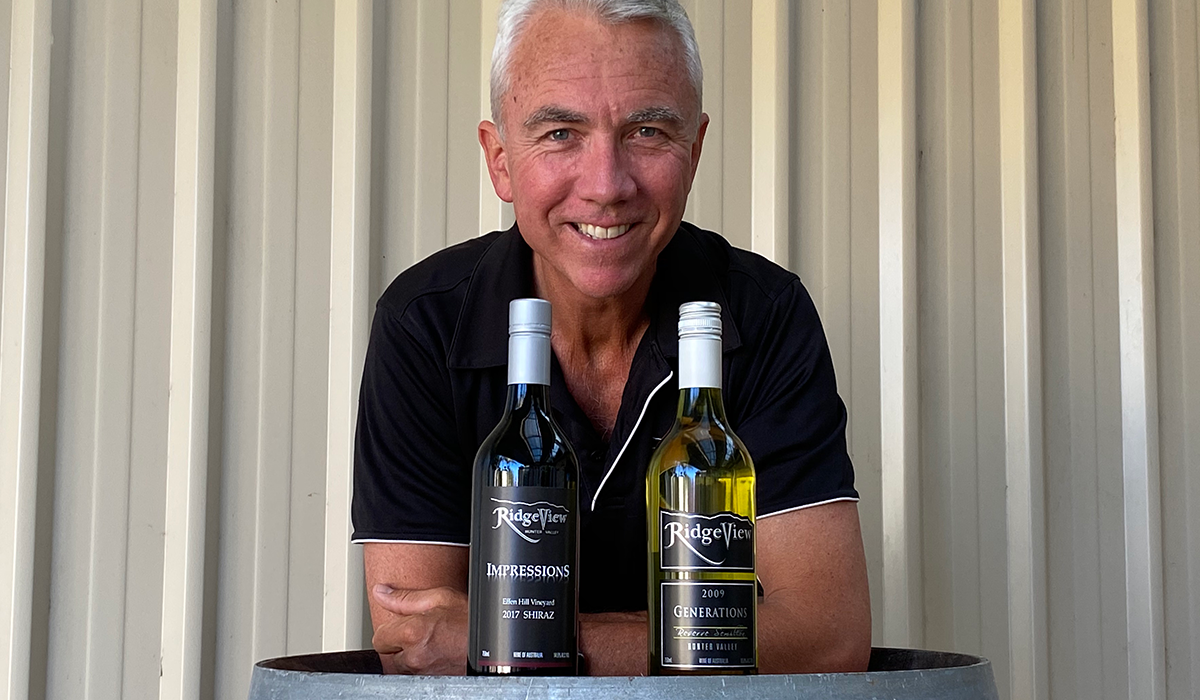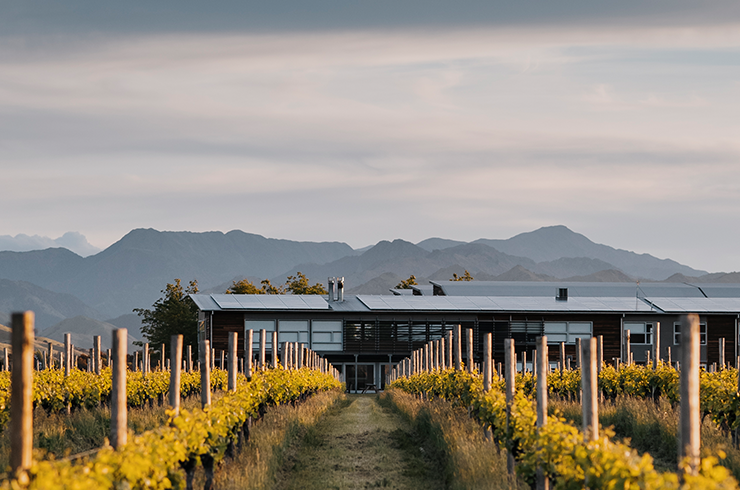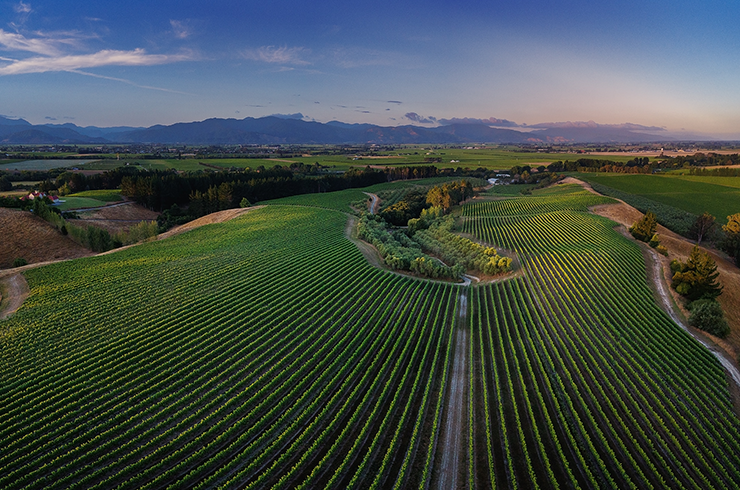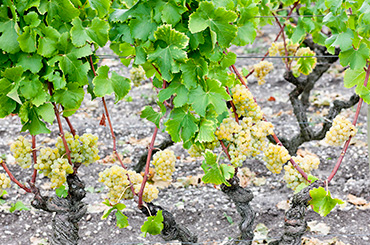Semillon may not necessarily be the most difficult variety to cultivate – but producing world-class single-variety wines is another feat entirely. One region that has semillon production down to a fine art is New South Wales's Hunter Valley. The winemakers in this region keep their methods simple, relying on the unique terrior to express itself through a minimalist approach that begins in the vineyard. Hunter Valley producers agree that excellent examples all have one thing in common – the ability to develop seemingly endless complexity in bottle.
Ahead, five winemakers from the region discuss what it takes to produce exceptional Hunter Valley semillon – and how they enjoy theirs.

Briar Ridge winemaker, Alex Beckett, vine-side.
Alex Beckett, Briar Ridge
H. How would you describe semillon from the Hunter Valley?
A. Hunter Valley Semillon is, for me, defined by three things: its ability to express the vineyard site it is farmed upon, its taut and refreshing citric character as a young wine and its seemingly endless ability to gain complexity as it takes on bottle age. Semillon is best enjoyed on a warm summer’s day with all of the fresh fish you can gather – from Sydney rock oysters to a rich tuna crudo dish. Serve the young bottles well-chilled by the water and the older bottles closer to room temperature, with a light chill to maximise on bottle expression.
H. Can you tell us about your winemaking approach?
A. We approach Hunter Valley semillon production is very simply – whole-bunch pressing, neutral yeast selection and very light lees contact. The last few years have seen a bit more of shift towards finding techniques which handle tannins, phenols and freshness more minimally, with less reliance on winery additions and a reduction in overt oak influence. This has been a result of extensive trials in the winery – we found that the most interesting batches of wine are always those which have their own natural personality, rather than the more classically ‘complete’ ones
Find out more.

Winemaker Darren Scott with the 2009 RidgeView Generations Semillon and 2017 Impressions Shiraz.
Darren Scott, RidgeView
H. How does semillon in this region differ from others?
D. Hunter Valley semillon is regionally unique – picked at low sugar levels, lightly pressed and fermented without skin contact or barrel fermentation. The variety has large berries with big bunches and a good extraction rate. I first encountered Hunter Valley styles in the 80's, but became more interested in the 90's – I love the young, fresh semillons as they are the perfect accompaniment to fresh local seafood. However, the transformation they go through 10-20 years after bottling is quite remarkable. There is nothing like the characteristics of an aged semillon from the Hunter Valley.
H. Can you tell us about the RidgeView style?
D. Like most of the best examples of semillon in the Hunter Valley, our fruit comes from vines on sandy, loamy river soils – the terroir is perfectly suited to the variety. Our 2009 RidgeView “Generations” Reserve Semillon was the classic style in its youth with a great acid spine for longevity, but is now starting to show gorgeous aged honey, toasty characters whilst retaining the citrus characters and acid spine. We have vertical packs available at our cellar door, just ask and we can dig some treasure out of the cellar. It’s amazing to try multiple years side-by-side to see the evolution of the wine over bottle age and different vintages.
Find out more.

Owner and winemaker of Keith Tulloch Wine, Keith Tulloch.
Keith Tulloch, Keith Tulloch Wines
H. What makes Hunter Valley semillon special?
K. The Hunter Valley provides ideal conditions for producing world-class semillon – everything needs to be in perfect alignment for the fruit to generate such beautiful brightness and pure expression at early maturity. The key is the vineyard: intense yet refined grape flavor with fresh natural acidity provides the chemistry for a classic white wine of unsurpassed age-worthiness. Hunter semillon is equal to Champagne for matching with food, setting, and season – but much less expensive to buy. It’s an easy choice.
H. How do you approach the winemaking process
K. Timing of harvest is vital in achieving the ideal natural expression of semillon fruit. The winemaker’s task is to compulsively protect all of that amazing fruit purity in the first softly pressed juice and retain its vibrancy in the bottle. Our small estate can hand-harvest at the ideal time so that every berry delivers the best possible potential. Our winery is state-of-art, and our quality-obsessive crew is among the best in the business. We are constantly focusing on refining our vineyard management as well as our winemaking inputs.
Find out more.

Drayton's Family Wines owner, John Drayton.
Edgar Vales, Drayton's Family Wines
H. What do you love about semillon as a variety?
E. My love of Hunter Valley semillon comes from its freshness and zestyness as a young wine and its development to a multi-layered and complex wine with age. I first encountered the variety as richer, fumé style from other regions – then I was introduced to zesty, young, single-variety styles that helped me through hot summers. This, in turn, led to samplings of older Hunter styles, where the amazement of its change through aging was almost philosophical.
H. What is notable about semillon from your winery?
E. Drayton’s semillons are unique in that they reflect the vineyards where they are grown. Wines grown in deeper, richer soils deliver more opulent, upfront wines with a 'drink-me-now' attitude. Poorer soils give you a greater intensity of citrus flavours and a natural acid backbone that translate to edgier wines in their youth, but mature to a greater level of complexity. Fortunately, we have the rarer, poorer sandy soils that – together with our viticultural practices – deliver the latter. I am very fortunate to have Greg Drayton and his team as caretakers looking after a very old vineyard that has only ever been tended to by his family. This gives me the ability to concentrate on the winemaking – when as the raw material is of great quality, the winemaking is relatively simple.
Find out more.

Winemaker Andrew Margan samples semillon straight from the barrel.
Andrew Margan, Margan
H. How would you describe Hunter Valley semillon?
A. Semillon from the Hunter Valley, made in its purest traditional form, is a wine based around ripe citrus flavours, and a length of palate created by natural acidity and a relatively lower alcohol. The balance and texture of the wine creates a unique white style that builds and complexes beautifully with age. I love its texture and mouthfeel. The variety combines an incredible line and length and lighter-body with a lingering mouthfeel that makes light foods sing like no other white wine.
H. What is unique about the Margan style?
A. The ancient volcanic soil of the Fordwich Sill provides all of our wines with a distinctive difference. An extra level of ripeness results in an extra amount of mouthfeel through fruit richness, while still maintaining an acid backbone. I have been making Hunter Valley semillon for over 40 years now and over that time my techniques have evolved – however, the most important thing about the variety and style comes from where it is grown. My techniques have been fine-tuned to ensure the wine represents our unique terroir.
Find out more.
This article was produced in partnership with the featured wineries.
Top image credit: Wine Australia / Ian Routledge






